Cherokee Tribe
Discover the rich history, culture, and contributions of the Cherokee people
Who Are the Cherokee?
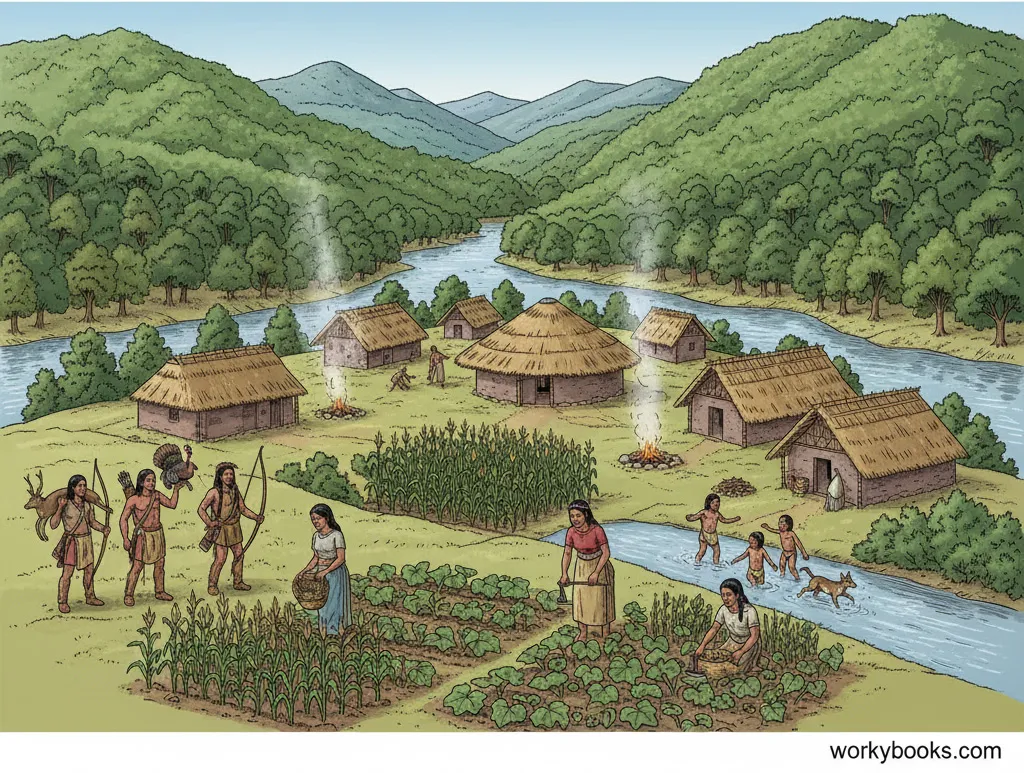
The Cherokee are a Native American people originally from the southeastern United States, particularly areas that are now North Carolina, Tennessee, Georgia, and Alabama. They are one of the largest and most well-known Native American tribes in the United States.
The name "Cherokee" comes from a Creek word meaning "people of different speech." In their own language, they call themselves Aniyunwiya, which means "Principal People" or "Real People."
Did You Know?
The Cherokee developed one of the few independent writing systems created by a Native American tribe!
Cherokee History
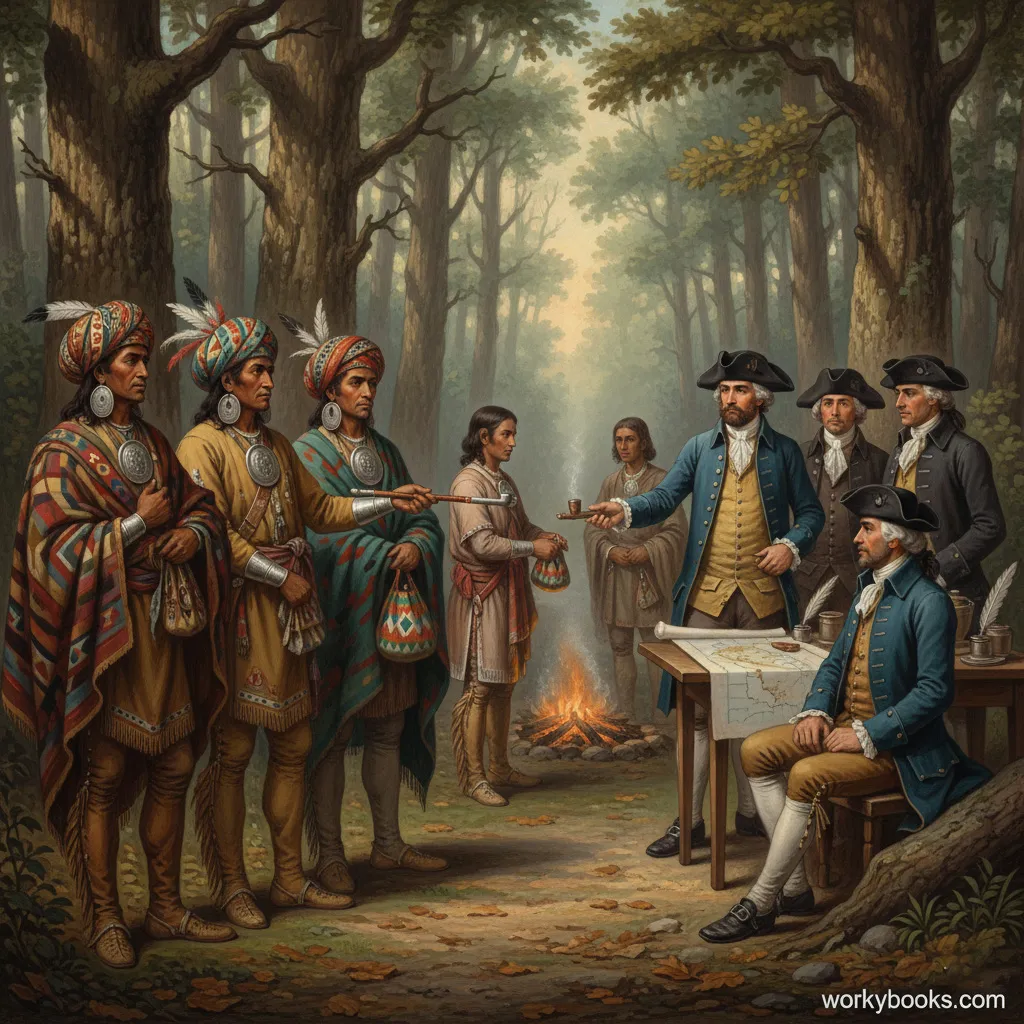
Before European contact, the Cherokee lived in settled villages and practiced agriculture, hunting, and gathering. They had a complex society with their own government, laws, and spiritual beliefs.
In the 1700s and early 1800s, the Cherokee adapted many European customs while maintaining their cultural identity. They developed a written constitution and a newspaper, and many became successful farmers and business owners.
First European Contact
Spanish explorer Hernando de Soto encounters the Cherokee people
Cherokee Syllabary
Sequoyah completes the Cherokee writing system
Cherokee Phoenix
First Native American newspaper published using Cherokee syllabary
Indian Removal Act
President Andrew Jackson signs law forcing Native Americans off their lands
Cherokee Culture & Traditions
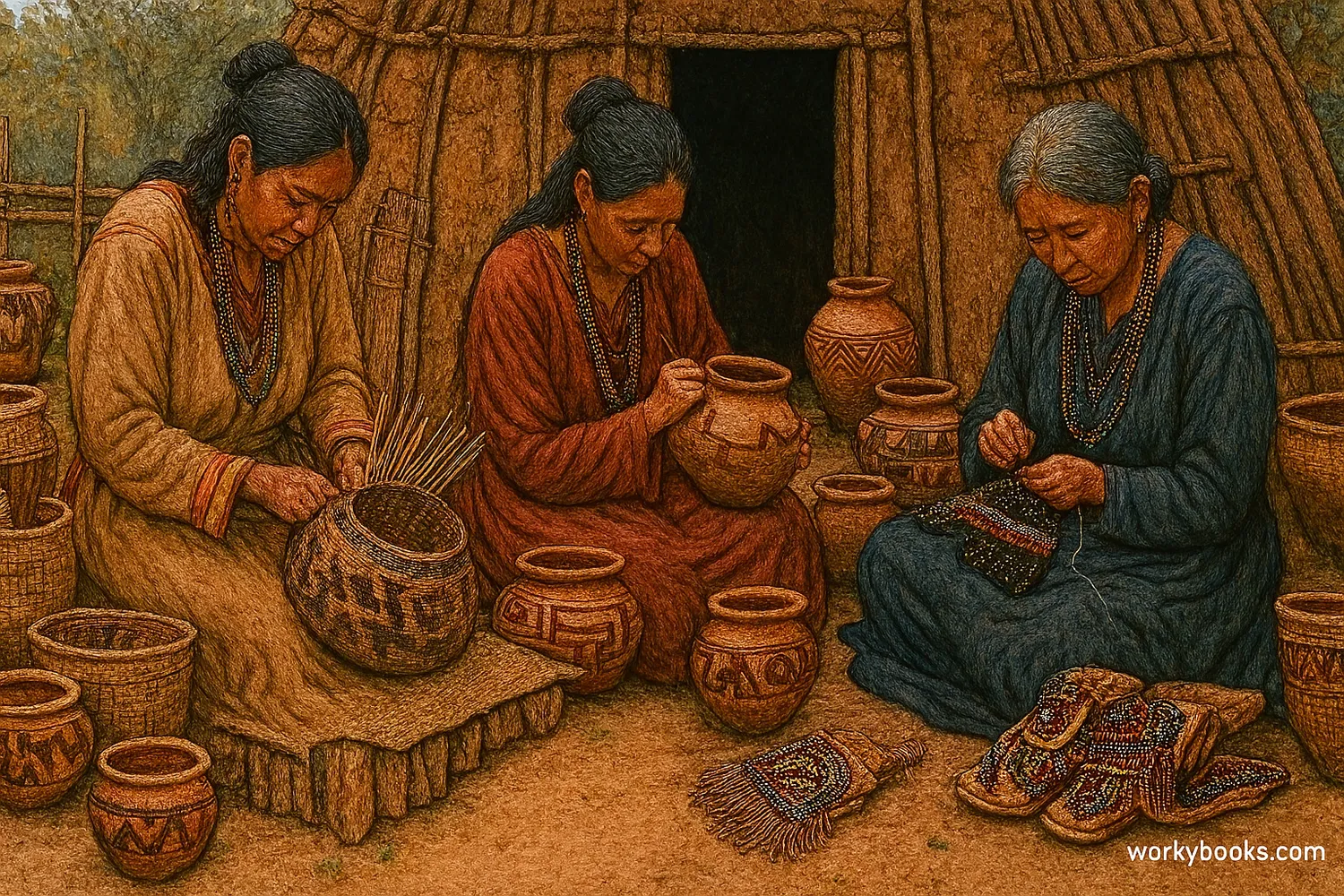
Traditional Cherokee culture was rich with art, storytelling, music, and ceremonies. They were skilled at basket weaving, pottery, beadwork, and carving. The Cherokee had a deep connection to nature and believed in maintaining balance with the natural world.
Important aspects of Cherokee culture included:
Community Life
Villages were organized around a central council house for gatherings
Agriculture
Grew corn, beans, and squash - known as the "Three Sisters"
Storytelling
Oral traditions preserved history, values, and spiritual beliefs
Sequoyah & the Cherokee Syllabary
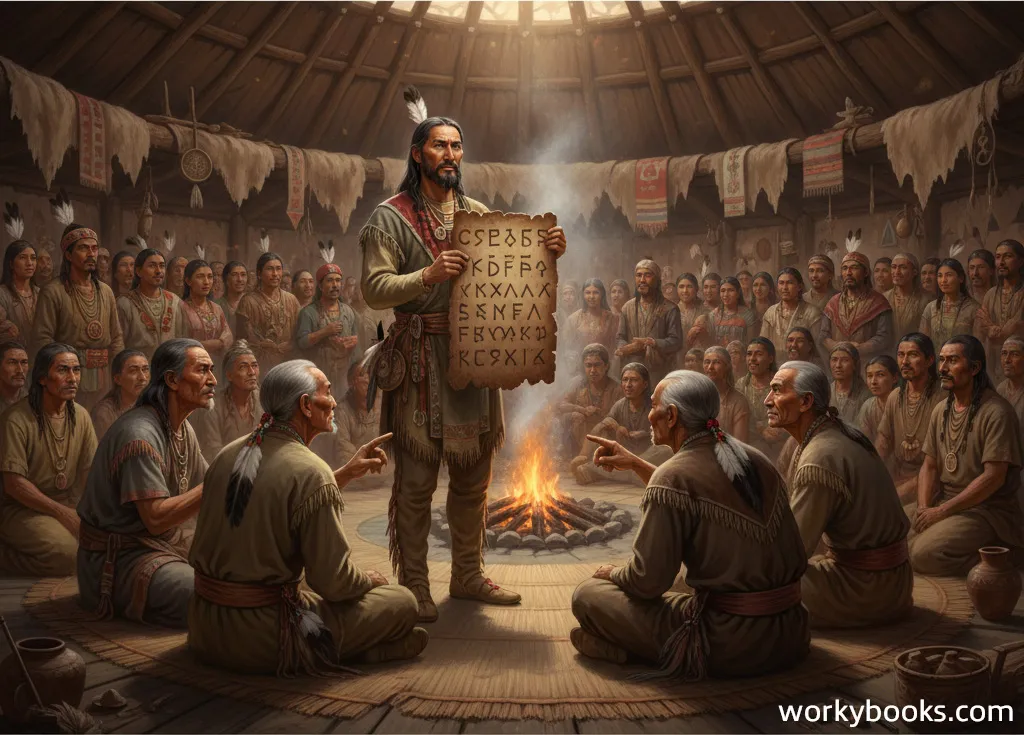
Sequoyah (c. 1770-1843) was a Cherokee silversmith who created the Cherokee writing system, known as a syllabary. Unlike an alphabet that represents sounds, a syllabary represents syllables.
After 12 years of work, Sequoyah completed his syllabary in 1821. It consists of 85 characters that represent all the syllables in the Cherokee language. The Cherokee Nation quickly adopted this writing system, and within a few years, most Cherokee people could read and write in their own language.
Impact of the Syllabary
The Cherokee syllabary allowed the Cherokee to publish their own newspaper, the Cherokee Phoenix, in 1828. It was the first newspaper published by Native Americans in the United States and was printed in both Cherokee and English.
The Trail of Tears
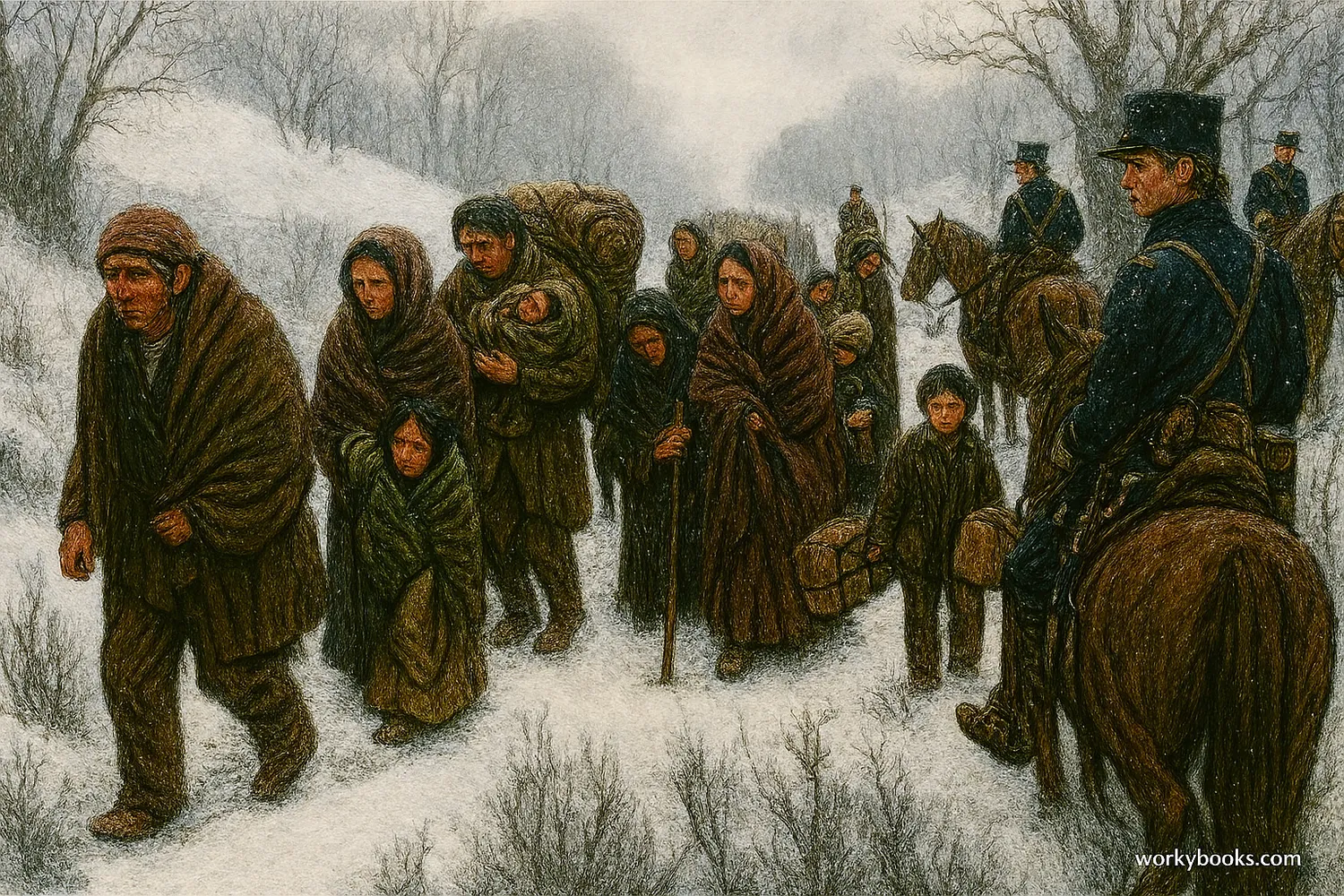
The Trail of Tears was the forced relocation of the Cherokee and other Native American tribes from their ancestral homelands in the southeastern United States to Indian Territory (present-day Oklahoma) in 1838-1839.
This tragic event was a result of the Indian Removal Act of 1830, signed by President Andrew Jackson. Despite winning a Supreme Court case that recognized Cherokee sovereignty, the U.S. government proceeded with forced removal.
Indian Removal Act
Congress passes law authorizing removal of Native Americans from southeastern states
Treaty of New Echota
Small group of Cherokee signs treaty agreeing to relocation (most Cherokee opposed it)
Forced Removal Begins
U.S. Army rounds up Cherokee people and forces them into stockades
Trail of Tears
Approximately 16,000 Cherokee forced to march 1,200 miles to Indian Territory
The journey was devastating. Approximately 4,000 Cherokee died from disease, starvation, and exposure during the forced march or in the stockades before departure. The Trail of Tears remains a painful chapter in both Cherokee and American history.
Cherokee Tribe Quiz
Test your knowledge about the Cherokee tribe! Answer all 5 questions to see how much you've learned.
Frequently Asked Questions
Here are answers to common questions about the Cherokee tribe:
Cherokee Trivia
Discover amazing facts about the Cherokee people!
Unique Writing System
The Cherokee syllabary is one of the few writing systems in history known to be invented by a single person. Sequoyah created it without being able to read or write any other language.
Early Constitutional Government
In 1827, the Cherokee Nation adopted a written constitution modeled after the U.S. Constitution, establishing a government with executive, legislative, and judicial branches.
Agricultural Innovations
The Cherokee practiced sustainable agriculture for centuries, developing the "Three Sisters" method of planting corn, beans, and squash together, which benefits all three plants.
Technology Adoption
The Cherokee language is available on many digital platforms today, including iPhone and Android keyboards, Google Search, and Microsoft Windows, helping preserve the language.


